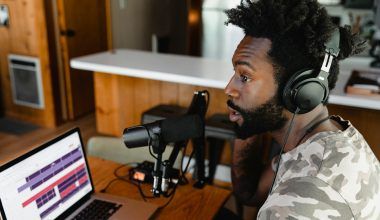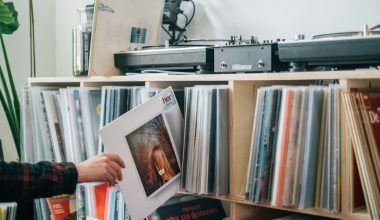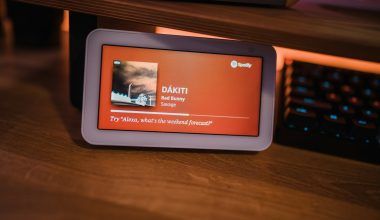The dream of having your music on every major streaming platform doesn’t have to rely on a distributor. In today’s world, where tools and technology are more accessible than ever, independent artists can take charge of their music distribution without needing third-party services. If you’ve been wondering how to share your album on all streaming platforms without a distributor, this guide will walk you through the entire process step by step.
Why Consider Self-Distribution?
Self-distribution isn’t just about saving costs. It’s about having full control over your music, branding, and release strategy. While distributors can simplify the process, they often come with fees, revenue-sharing clauses, and limitations on what you can do with your content. By choosing to handle distribution yourself, you:
- Keep 100% of your earnings.
- Maintain complete creative control.
- Decide your release dates and strategies.
- Build direct relationships with platforms and fans.
These benefits make self-distribution an appealing option, especially for independent artists.
What You Need Before Starting
To successfully share your album on all streaming platforms without a distributor, you’ll need to have a few essentials in place:
- High-quality audio files: Ensure your tracks are properly mixed and mastered.
- Album artwork: A visually appealing album cover can make all the difference.
- Metadata: Include song titles, artist name, genre, and other details for proper categorization.
- Publishing rights: Make sure you own the rights to your songs, including any samples or collaborations.
Having these elements ready will set you up for a smooth process.
1. Understand Platform Requirements
Different streaming platforms have specific requirements for audio formats, artwork dimensions, and metadata. Researching these details beforehand can save you time and effort. For example:
- Spotify prefers audio in WAV format with a minimum bitrate of 320 kbps.
- Apple Music requires album artwork to be at least 3000 x 3000 pixels.
- YouTube Music accepts MP3s but also allows videos for added visual impact.
Familiarize yourself with these specifications to avoid last-minute complications.
2. Create Accounts on Each Platform
To share your album without a distributor, you’ll need to create artist accounts directly with streaming platforms. Here’s how to get started:
- Spotify for Artists: Visit the Spotify for Artists website and claim your profile. This will give you access to analytics, playlist pitching, and customization tools.
- Apple Music for Artists: Similarly, Apple allows artists to manage their profiles, upload content, and track performance.
- YouTube Music: Use YouTube Studio to upload your tracks and create playlists for your album.
- Bandcamp and SoundCloud: These platforms are also excellent for reaching fans directly.
Setting up these accounts might take a little time, but it’s a one-time effort with long-term benefits.
3. Use Free or Open-Source Tools
If you’re not using a distributor, you’ll need tools to handle the technical aspects of uploading and converting files. Some great resources include:
- Audacity: For audio editing and conversions.
- Canva: For designing professional-quality album covers.
- Metadata editors: Tools like Mp3tag can help organize your song information efficiently.
By leveraging these tools, you can ensure your album meets industry standards.
4. Upload Tracks Individually
Unlike distributors who handle bulk uploads, self-distribution requires you to upload tracks one by one. Take your time with this step, as mistakes in metadata or file formats can affect your album’s visibility. Pay close attention to:
- Track titles: Ensure they are consistent and correctly spelled.
- Album sequencing: Arrange your songs in the desired order.
- Tags and genres: Use accurate tags to help platforms recommend your music to the right audience.
5. Promote Your Album Effectively
Once your album is live, the next step is promotion. Without a distributor, you’ll need to rely on your own marketing efforts. Some effective strategies include:
- Social media: Share behind-the-scenes stories, lyric snippets, and release announcements.
- Email newsletters: Build an email list to keep your fans updated.
- Collaborations: Work with influencers or fellow artists to amplify your reach.
The more you engage with your audience, the more streams your album is likely to receive.
6. Monitor Your Performance
After your album is available on streaming platforms, use analytics tools to track its performance. Spotify for Artists, Apple Music for Artists, and YouTube Studio offer detailed insights into listener demographics, streaming numbers, and playlist additions. Use this data to refine your future releases and marketing strategies.
7. Explore Licensing and Monetization
If your album gains traction, you might want to explore licensing opportunities or other monetization methods. Platforms like YouTube offer ad revenue, while others like Bandcamp allow direct sales. These additional income streams can boost your earnings significantly.
Common Challenges and How to Overcome Them
Self-distribution isn’t without its challenges. Here are some hurdles you might face and tips to overcome them:
- Time investment: Handling every step of the process can be time-consuming. Create a schedule to manage your time effectively.
- Technical knowledge: Learn the basics of audio formatting and metadata management. Online tutorials can be very helpful.
- Limited reach: Without a distributor’s connections, it might take longer to build an audience. Focus on consistent engagement and high-quality content.
Why Self-Distribution Empowers Artists
Sharing your album on all streaming platforms without a distributor isn’t just about cost savings. It’s about independence, control, and the freedom to shape your musical journey. By taking the reins of your distribution process, you gain valuable skills and a deeper understanding of the music industry.
Final Thoughts
If you’ve ever hesitated to release your music because of distributor fees or restrictions, now is the time to take matters into your own hands. Learning how to share your album on all streaming platforms without a distributor is not only feasible but also empowering. With the right tools, a solid plan, and a bit of persistence, you can make your music accessible to listeners worldwide.
So, start today. Your music deserves to be heard, and you have the power to make that happen.
For further reading, explore these related articles:
- Monetize Your Single on Apple Music Easily: A Comprehensive Guide
- How to Monetize Your Single on Apple Music Without a Distributor
- Monetize Your Single on Apple Music in 2025
For additional resources on music marketing and distribution, visit DMT RECORDS PRIVATE LIMITED.






